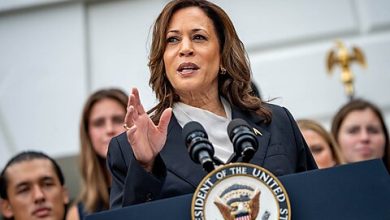Ending the Fed’s Emergency Lending Facilities: Mnuchin v. Waters

 On November 19, Treasury Secretary Steven Mnuchin announced that he would sunset five of the Federal Reserve’s emergency lending programs at year-end: the Primary Market Corporate Credit Facility, Secondary Market CCF, Municipal Liquidity Facility, Main Street Lending Program, and Term Asset-Backed Securities Loan Facility (TALF). His decision, expressed in a letter to Fed Chairman Jerome Powell, is based on the claim that the Coronavirus Aid, Relief, and Economic Security (CARES) Act requires that the programs be ended on December 31, 2020.
On November 19, Treasury Secretary Steven Mnuchin announced that he would sunset five of the Federal Reserve’s emergency lending programs at year-end: the Primary Market Corporate Credit Facility, Secondary Market CCF, Municipal Liquidity Facility, Main Street Lending Program, and Term Asset-Backed Securities Loan Facility (TALF). His decision, expressed in a letter to Fed Chairman Jerome Powell, is based on the claim that the Coronavirus Aid, Relief, and Economic Security (CARES) Act requires that the programs be ended on December 31, 2020.
However, he also thinks that the five emergency lending programs, established under Section 13(3) of the Federal Reserve Act, are no longer needed. In particular, he contends that the mere announcement of substantial support for distressed corporate and municipal debt markets helped stabilize financial markets and reduce spreads.
The Fed has only funded about $25 billion of loans and assets for the five programs out of $454 billion Congress provided to establish the facilities under the CARES Act. Mnuchin would like the Fed to return the unused funds so that the incoming Congress could reallocate them, presumably for another stimulus package. In a proviso, Mnuchin argues that, if necessary, the Fed could request one or more of the rescinded facilities to be refunded using the Treasury’s exchange stabilization fund, “to the extent permitted by law,” or funds appropriated by the incoming Congress.
Mnuchin v. Waters
On December 2, Mnuchin defended his case for ending the aforementioned emergency lending programs before the House Financial Services Committee, chaired by Maxine Waters (D-CA). He argued that Section 4029 of the CARES Act—stating “the authority provided under this subtitle [“Coronavirus Economic Stabilization Act of 2020″] to make new loans, loan guarantees, or other investments shall terminate” on December 31, 2020—is legally binding. Accordingly, he held that his decision, on November 19, to sunset the five programs “was not a political decision. I was merely implementing the CARES Act.”
Chairwoman Waters disagreed, saying that the CARES Act was meant to operate throughout the pandemic—not end on December 31, 2020. In her opinion, “There is simply no justifiable reason to take these tools [i.e., the Fed’s five emergency lending facilities] away.” She then asked Fed Chairman Powell if he agreed with the Treasury secretary. Looking a bit uneasy, he replied, “The secretary has sole authority over the CARES Act funding. His reading of the law is the authoritative one and we [the Fed’s Board of Governors] accept it.”
Nevertheless, when Powell first received Mnuchin’s letter, the Fed released a brief statement declaring it “would prefer that the full suite of emergency facilities established during the coronavirus pandemic continue to serve their important role as a backstop for our still-strained and vulnerable economy.”
Resolving the Legal Issue
It is important to recognize that the CARES Act does not say that the Fed’s five facilities have to be closed at the end of this year, only that the Treasury cannot “make new loans, loan guarantees, or other investments” (emphasis added). As Brookings scholar Peter Conti-Brown notes, “Mnuchin is right that the Treasury cannot make new commitments after December 31, 2020.” However, “that has nothing to do with the Fed’s emergency lending authority” under Section 13(3) of the Federal Reserve Act. Moreover, according to Conti-Brown, there is no basis in the law to require that Mnuchin rescind funds from the Fed’s emergency lending facilities; “that was a decision for which he is solely responsible.”
Under Section 13(3) of the Federal Reserve Act, Congress gives the Fed authority to engage in emergency lending for “unusual and exigent circumstances.” That authority was exercised to counter the 2008 financial crisis and greatly expanded this year as the Covid-19 pandemic—and government lockdowns—depressed economic activity. Once the Fed’s Board of Governors votes to authorize an emergency lending facility, the Fed must specify “the terms and conditions for participation.” Moreover, the Dodd-Frank Act of 2010 requires that the Fed’s emergency lending authority be subject to oversight by the Secretary of the Treasury.
When one examines the “term sheet” for the Secondary Market Corporate Credit Facility (SMCCF), published by the Federal Reserve Bank of New York on July 28, 2020, the legal issue of whether the Treasury secretary must terminate the Fed’s emergency credit facilities by December 31, 2020, is clear:
The Facility will cease purchasing eligible individual corporate bonds, eligible broad market index bonds, and eligible ETFs no later than December 31, 2020, unless the Facility is extended by the Board of Governors of the Federal Reserve System and the Treasury Department. The Reserve Bank will continue to fund the Facility after such date until the Facility’s holdings either mature or are sold [emphasis added].
Likewise, the New York Fed’s FAQs (Frequently Asked Questions) about the Primary and Secondary CCFs, published on December 4, 2020, repeated the proviso that the CCFs can be extended beyond December 31, 2020, if approved by the Fed and the Treasury.
Thus, the legal dispute between Mnuchin and Waters appears to be settled, beyond a reasonable doubt, in Waters’ favor. The verdict, as stated by Senator Robert Menendez (D-NJ), during the Senate Banking Committee hearing with Mnuchin and Powell on December 1, is that ending the Fed’s emergency lending facilities “is not mandated by law.”
Although the preponderance of evidence supports that conclusion, it does not mean there are no sound arguments for ending the Fed’s support for corporate debt markets, municipal debt, and TALF, or for shifting the Main Street Lending Program—which the Fed is ill-suited to oversee—to Congress.
Limiting the Fed’s Emergency Lending Powers
Treasury Secretary Mnuchin’s call for ending the Fed’s five emergency lending programs—based on his interpretation of the CARES Act—fails the legality test. But what about his argument that the programs should be ended because they are no longer needed?
In the secretary’s letter to Chairman Powell, he presents his economic case for sun setting the Fed’s facilities by year-end:
The Federal Reserve facilities supported by the Treasury’s contribution of CARES Act funds have clearly achieved their objective. When the crisis hit in March, bond issuance volumes fell and borrowing spreads rose dramatically across financial markets. Banks came dangerously close to their lending limits. Today, bond issuance volumes equal or exceed pre-COVID levels, and borrowing spreads have fallen 80-95% of the way back to their pre-crisis values in all major sectors of the financial markets. Banks have the lending capacity to meet the borrowing needs of their corporate, municipal, and nonprofit clients.
To achieve this “success,” the Fed only had to use a small portion ($25 billion) of the $454 billion appropriated by Congress, leaving $429 billion of unused funds. On the surface, it looks like the mere announcement of the Fed’s support programs had a major impact on restoring credit markets. However, as Robert Hetzel, a longtime (now retired) economist at the Federal Reserve Bank of Richmond, wrote in a recent study for the Mercatus Center, “There is . . . no way to isolate the announcement effect of the Fed’s credit programs from the Fed’s monetary policy actions and from the fiscal policies in the CARES Act.” In his view, credit markets were acting correctly when spreads increased due to the pandemic and lockdowns: the higher yields and lower valuations of distressed corporate debt, for example, reflected the increased uncertainty and higher risks of holding that debt. The Fed’s intervention in credit markets was not the key reason for calming markets, according to Hetzel. Rather, it was the Fed’s role “of supplying ample reserves.”
Mnuchin would have a stronger argument for ending the emergency lending facilities if he had pointed out the distortions such interventions create in underpricing risk and encouraging the search for yield by moving to risky assets. By signaling that the Fed had plenty of fire power to buy corporate debt, private markets jumped on the bandwagon. They were also incentivized by the Fed’s promise to keep its policy rate near zero for the foreseeable future and jack-up quantitative easing to $120 billion per month. The results have been an explosion in corporate debt issuance, both for investment-grade and junk bonds, with the former up 54 percent this year and the latter up 70 percent.
One of the key reasons for ending the Fed’s credit support programs is to distance the central bank from taking over fiscal functions that properly belong to Congress. The Fed’s intrusion into allocating credit to businesses, municipalities, and states blurs the line between monetary and fiscal policy (see Dorn and Selgin) and diminishes the independence and credibility of the central bank.
In this respect, Conti-Brown points out that, by providing the Treasury with nearly $500 billion to backstop the Fed’s emergency credit facilities, Congress opened the door for “a much closer collaboration” between the two entities. In particular, such collaboration increases the risk of putting “pressure on a traditional line between monetary and financial policy controlled by the central bank and the financial, economic, and fiscal policy controlled by the President . . . and his representatives.”
That threat could be diminished by ending the Fed’s off-balance sheet lending activities using its emergency lending facilities. Although Secretary Mnuchin has rescinded the Fed’s funding, there is a high likelihood that the Powell Fed will be refunded under the new Congress and with Janet Yellen as secretary of the Treasury. It would be in the national interest to avoid that maneuver and, instead, shift the Fed’s credit allocation programs and fiscal duties where they properly belong—with Congress and the political class.
Conclusion
The conflicting views of what the CARES Act authorizes, with regard to ending the Fed’s emerging lending programs, should make everyone aware of the complexity of America’s legal system and the difficulty of parsing specific passages in the law. Untangling the CARES Act and Section 13(3) of the Federal Reserve Act to determine whether Treasury Secretary Mnuchin’s interpretation is correct, versus Chairwoman Water’s, requires considerable effort.
In conclusion, there is no legal requirement for the Treasury to close the Fed’s five emergency lending facilities by December 31, 2020. However, there are a number of sound arguments for doing so—in particular, the distortions caused by those programs to the free-market system, and the dangers posed for limited government, an independent central bank, and a prudent fiscal authority.
The post Ending the Fed’s Emergency Lending Facilities: Mnuchin v. Waters appeared first on Alt-M.





